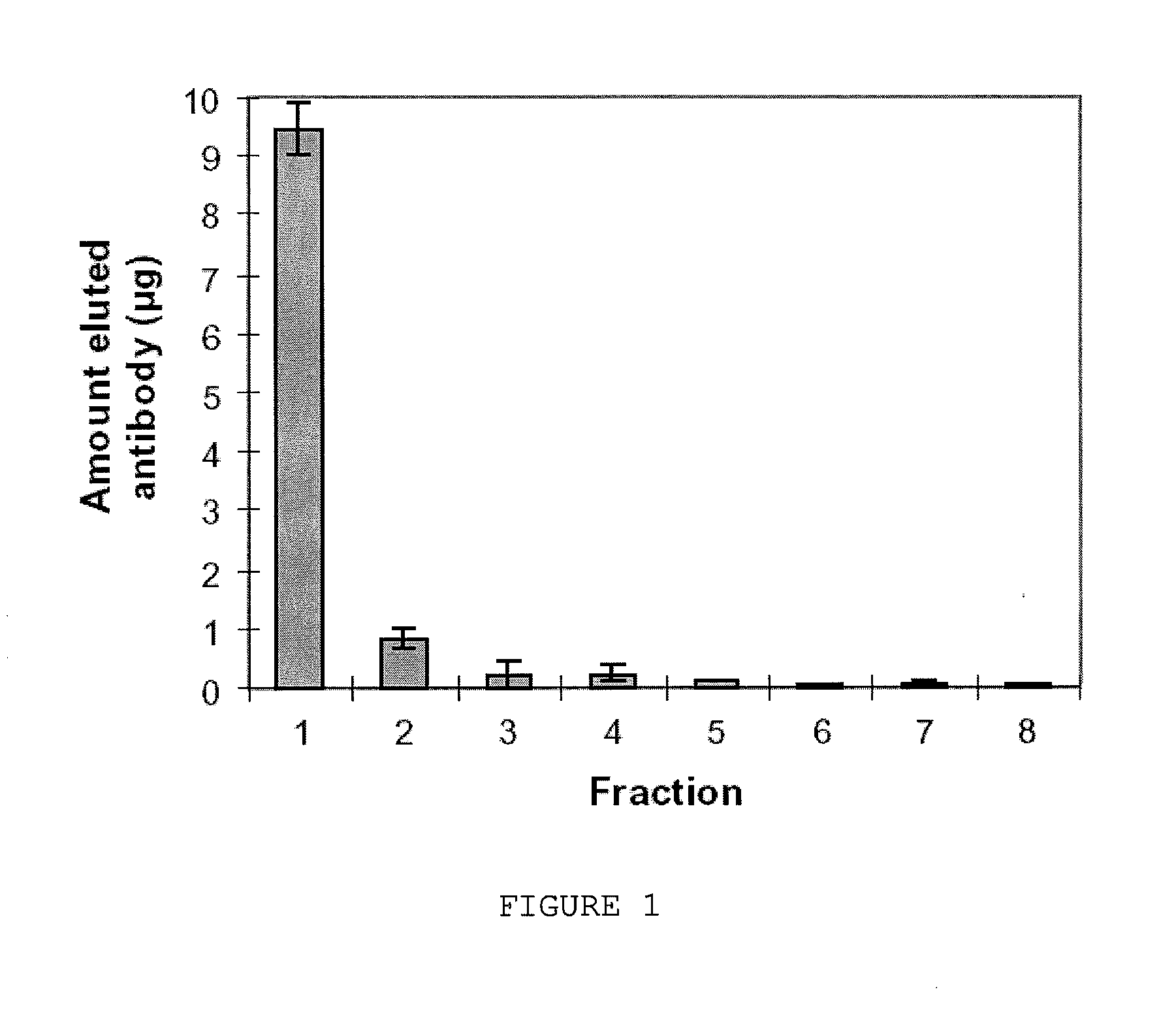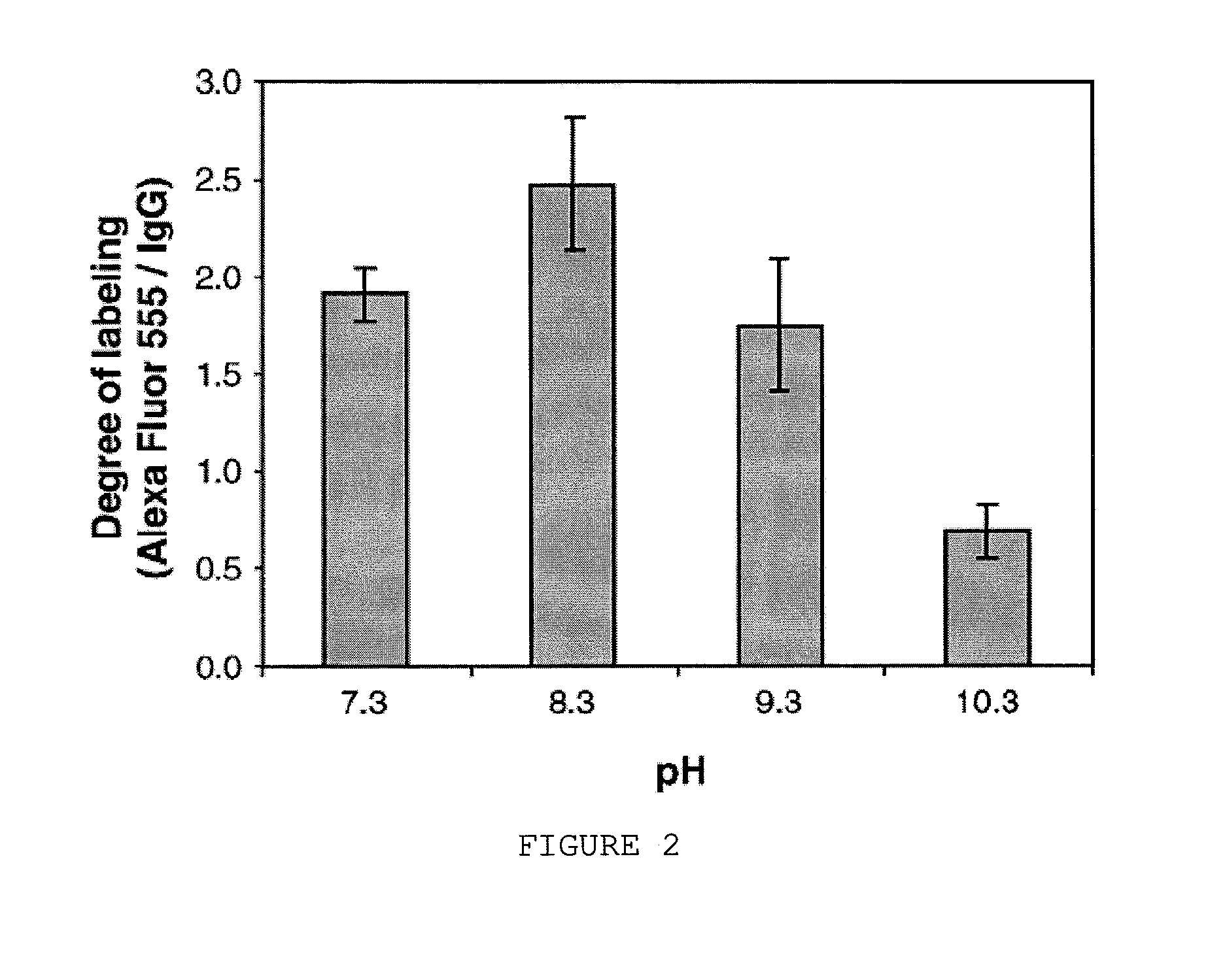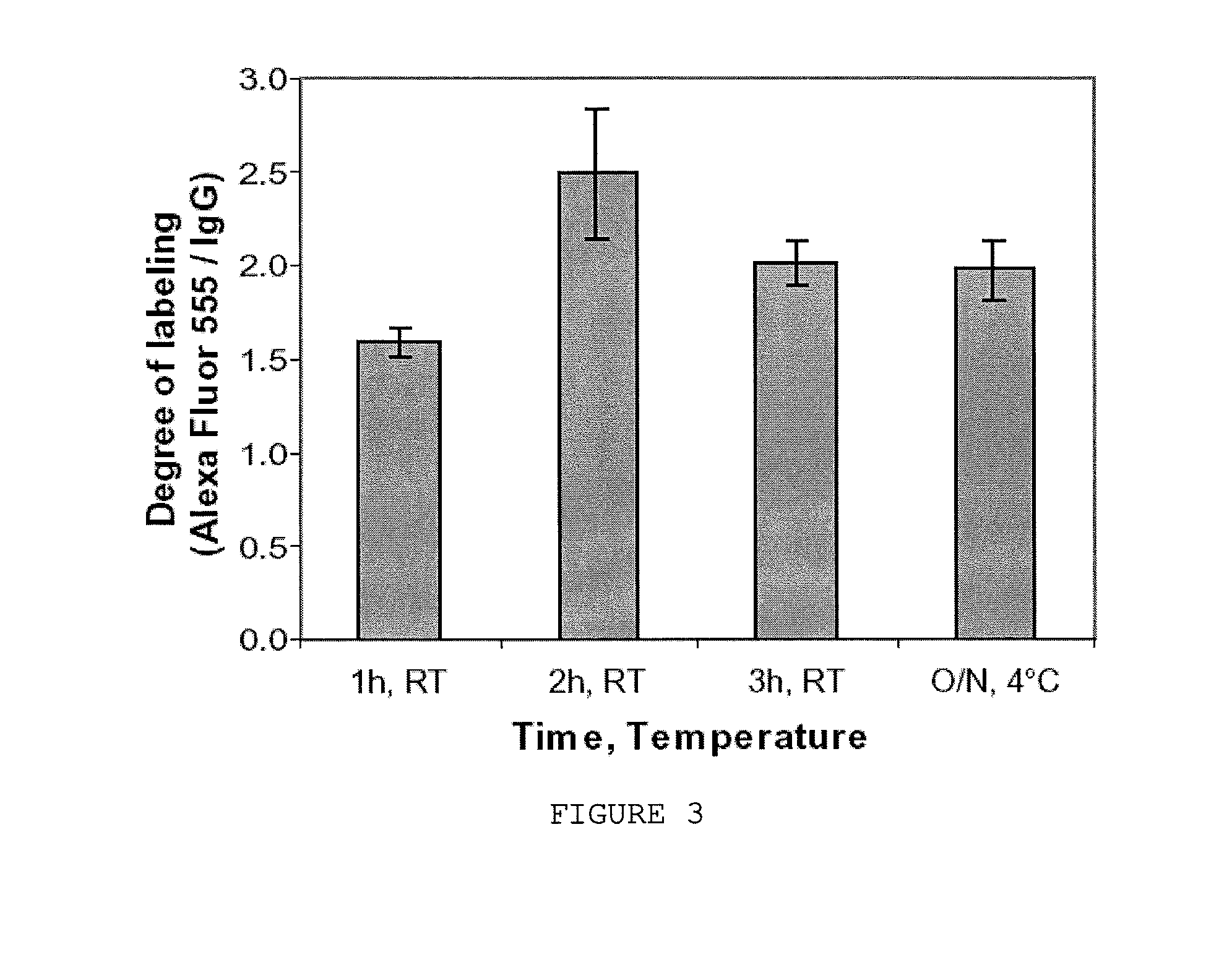Solid phase labeling method
a solid phase and labeling technology, applied in the field of protein labeling, can solve the problems of antibody loss during post-reaction purification steps, difficult to predict and additional, time-consuming steps, and achieve the effects of reducing antibody concentration, easy washing away, and controlling the degree of labeling
- Summary
- Abstract
- Description
- Claims
- Application Information
AI Technical Summary
Benefits of technology
Problems solved by technology
Method used
Image
Examples
Embodiment Construction
Materials and Methods
Materials
[0059]All chemicals were purchased from Sigma-Aldrich (Stockholm, Sweden) unless otherwise noted. The following Alexa Fluor® dyes were supplied by Invitrogen-Molecular Probes (Eugene, Oreg., US): succinimidyl ester of Alexa Fluor® 488 carboxylic acid (mixed isomers), succinimidyl ester of Alexa Fluor® 555 carboxylic acid and succinimidyl ester of Alexa Fluor® 647 carboxylic acid. 1 mg of each type of Alexa Fluor® dye was dissolved in DMSO to a final concentration of 40 μg / μl and stored at −80° C. Mono-specific polyclonal rabbit antibodies were obtained from the Human Protein Atlas program (http: / / www.proteinatlas.org / ). Antibodies used were α-His6-ABP (ABP refers to albumin binding protein), α-C1 tetrahydrofolate synthase, α-ornithine carbamoyltransferase, α-programmed cell death 4 isoform 1 and α-activator of 90 kDa heat shock protein ATPase homolog 1 (AHA1). Alexa Fluor® 555 rabbit anti-mouse IgG were obtained from Invitrogen-Molecular Probes (Eugene,...
PUM
| Property | Measurement | Unit |
|---|---|---|
| pH | aaaaa | aaaaa |
| concentration | aaaaa | aaaaa |
| concentration | aaaaa | aaaaa |
Abstract
Description
Claims
Application Information
 Login to View More
Login to View More - R&D
- Intellectual Property
- Life Sciences
- Materials
- Tech Scout
- Unparalleled Data Quality
- Higher Quality Content
- 60% Fewer Hallucinations
Browse by: Latest US Patents, China's latest patents, Technical Efficacy Thesaurus, Application Domain, Technology Topic, Popular Technical Reports.
© 2025 PatSnap. All rights reserved.Legal|Privacy policy|Modern Slavery Act Transparency Statement|Sitemap|About US| Contact US: help@patsnap.com



